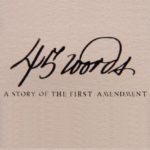Students in this simulation, as Republican members of the Kentucky and Virginia legislatures in 1798 and 1799, consider how they will oppose the Alien and Sedition Acts. Students will then act as members of other state legislatures and consider how to respond to Kentucky and Virginia. By engaging in this historical moment, students will wrestle with the ongoing tension between the Article VI, Clause 2, of the Constitution, which establishes the federal government as the “supreme Law of the Land,” and the Tenth Amendment, which reserves powers “not delegated to the United States” to the states or the people.
The Sedition Act: Certain Crimes Against the United States

The Sedition Act of 1798 passed during John Adam’s administration by the Federalist Party touched off a lively debate about the right of free speech. It also presented an early test case to the citizens and government of the United States. In times of war or imminent danger, how do you balance the need for security with the rights of individuals? How can partisan politics affect the process of shaping security policies?
1798: Sedition Act Reins in Newly Established Freedoms
Prominent Republican Party members immediately denounce the Act as a violation of First Amendment freedom of speech and of the press, but the Federal courts move forward with cases brought under the law. The still-new nation is drawn into a tense debate: To what extent should the government of a young nation limit criticism of its leaders and policies to protect its stability in the face of foreign threats?
Freedom of the Press
Students explore the scope and limitations of the First Amendment provision that protects freedom of the press. The lesson poses a hypothetical scenario involving student journalists handling private information. After a brief class discussion, students investigate the history, various interpretations, and modern relevance of First Amendment freedom of the press protections in the Interactive Constitution. The lesson builds on the freedom of speech lesson plan by asking students to compare and contrast the freedoms of speech and press through discussion questions including: How are speech and press related? and How are speech and press key to democratic functions?
